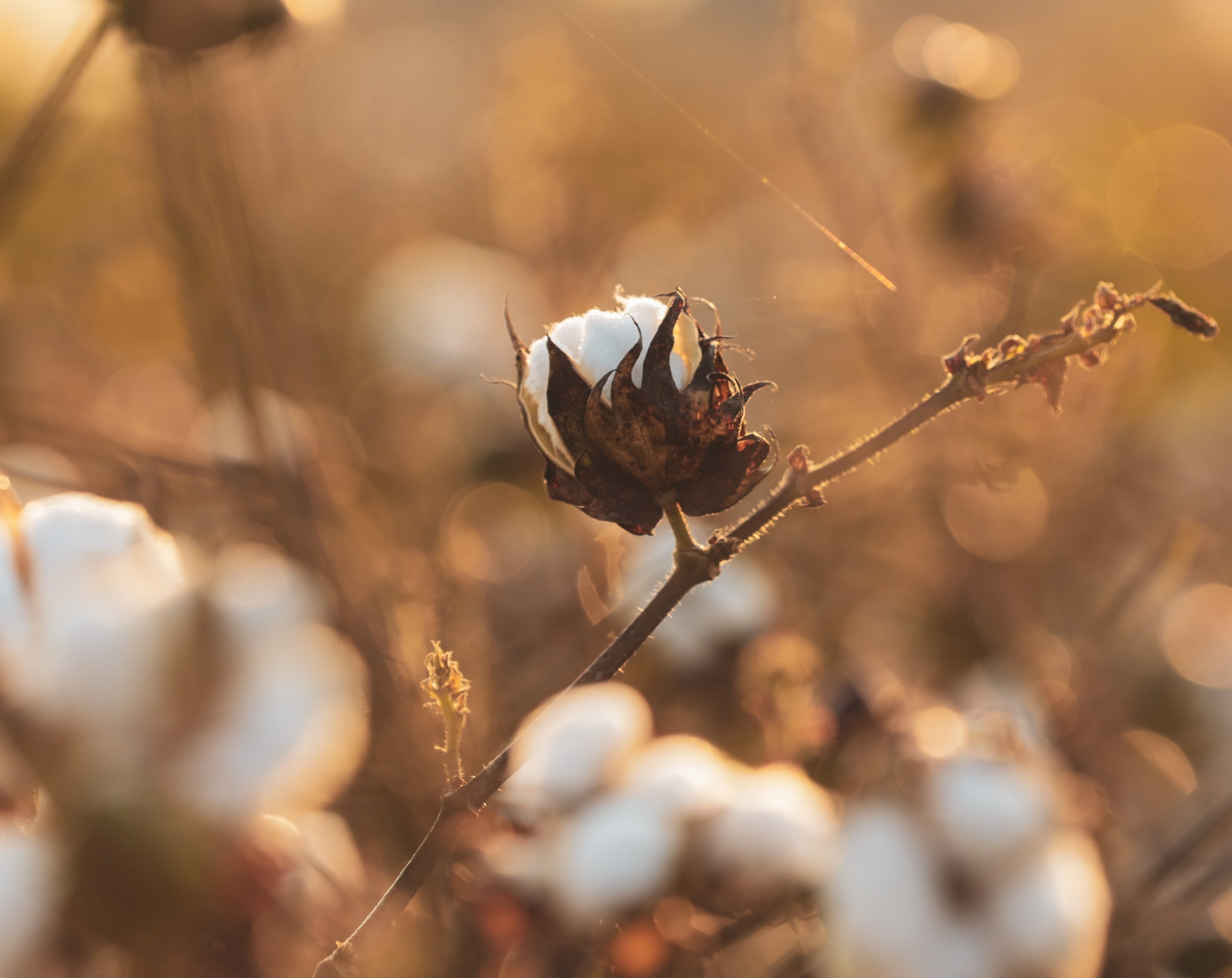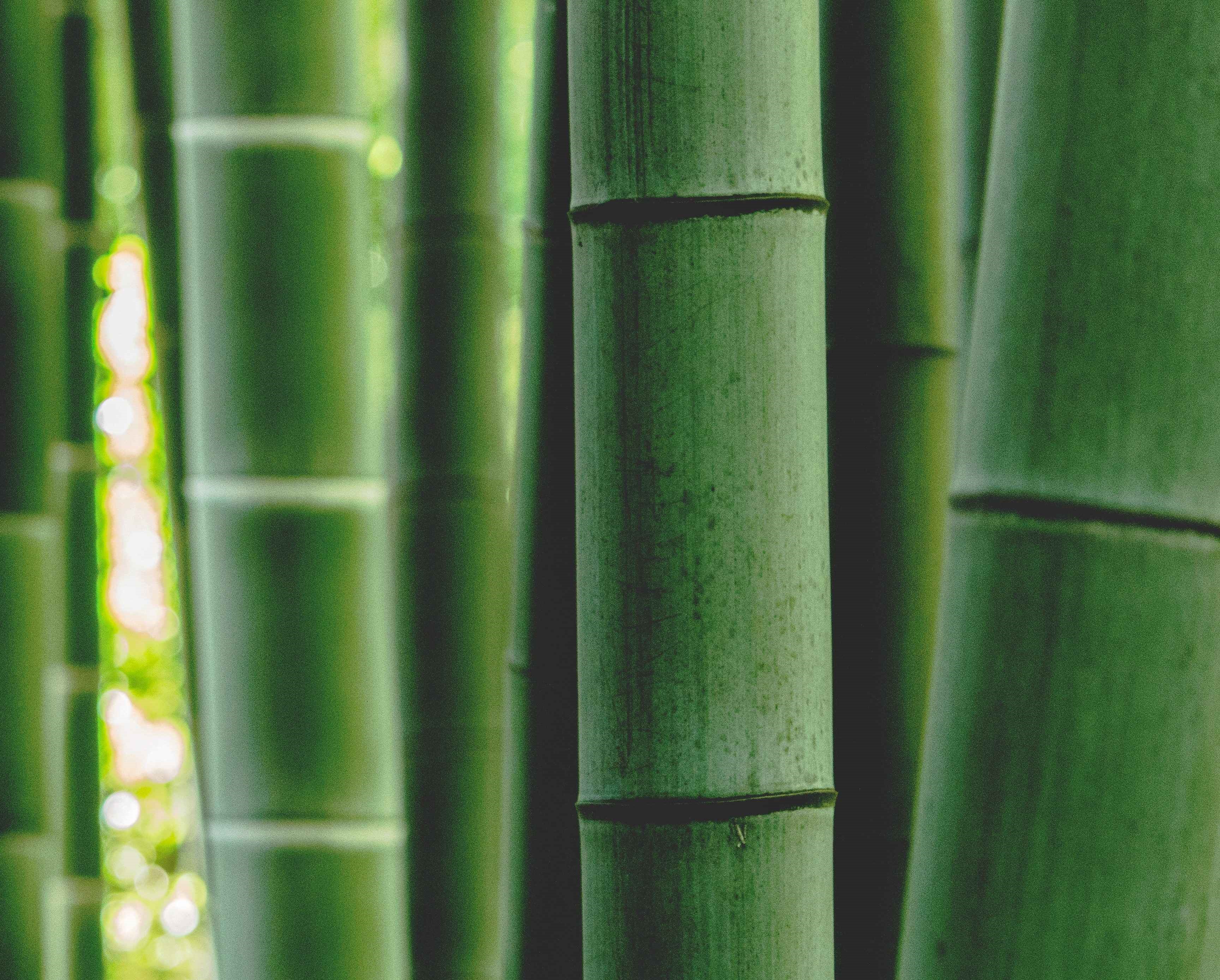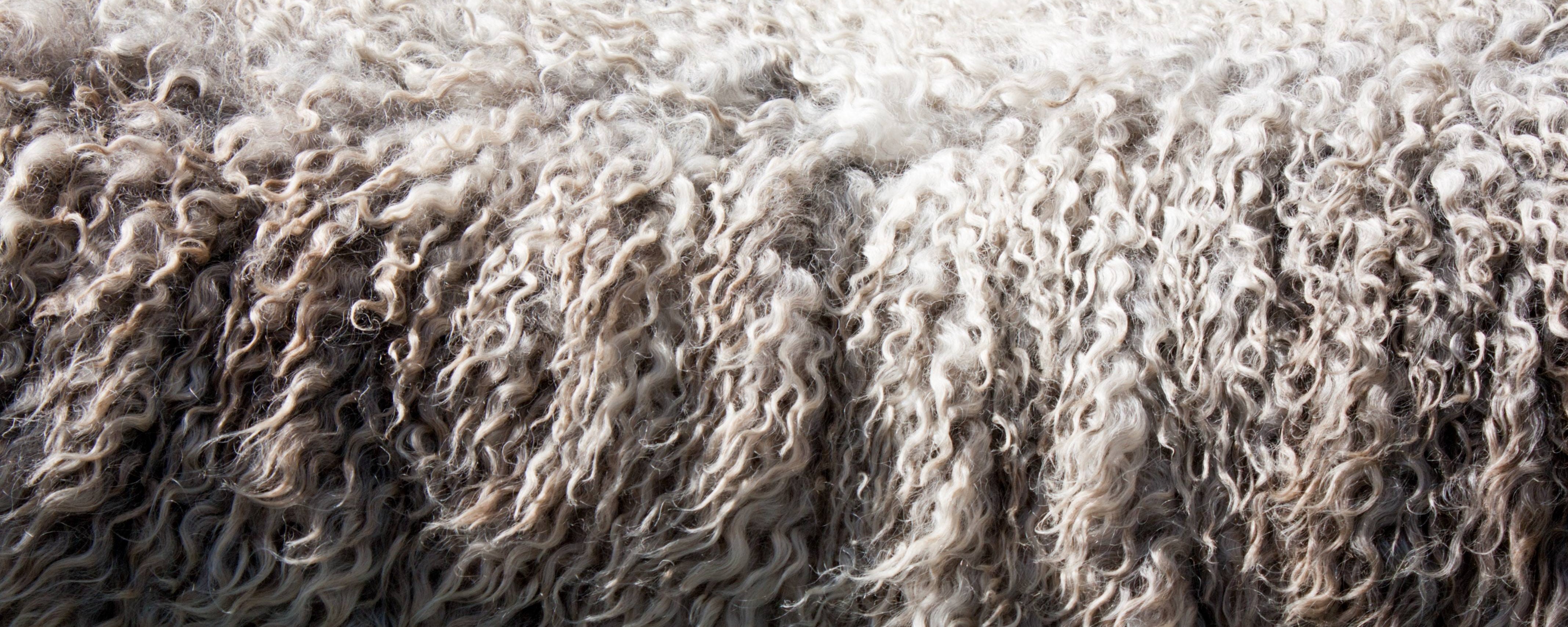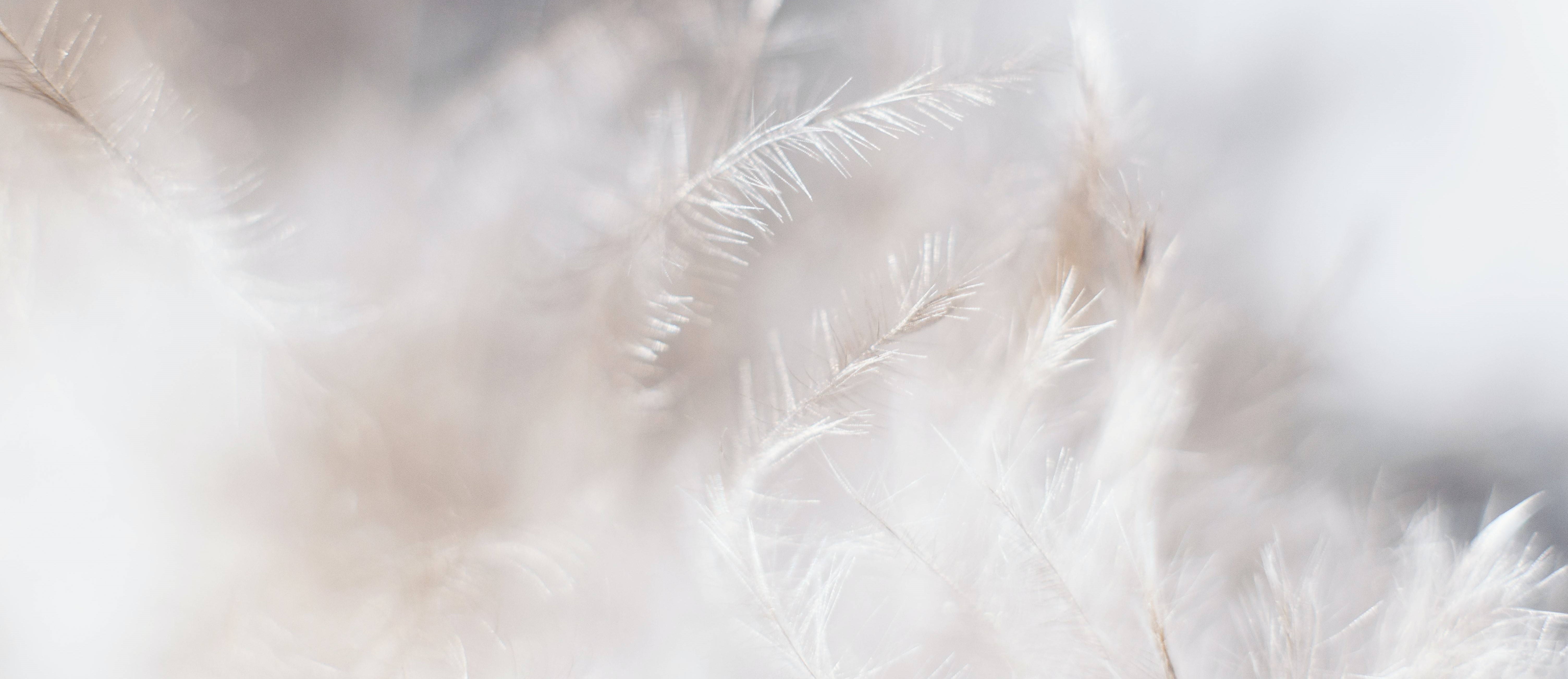Natural materials
There is, without doubt, a fabric for every occasion – whether you want cooling comfort in the summer heat, a warm night’s sleep or to regulate your body temperature. The question is when to choose which? And are there any environmental or moral concerns to consider? In this guide, we’ll take a closer look at our most common plant and animal-based materials and explore several certifications that support your effort to shop responsibly .
Cotton
The word ‘cotton’ comes from the Arabic word قطن (quton). Today, this material is found in almost every wardrobe and brand portfolio, and it’s easy to understand why. The material itself is easy to handle and versatile to use, but it’s also soft and comfortable to wear. In warm weather, it offers great breathability and moisture-wicking features. Pro tip: the production of conventional cotton is water, land and chemical-intensive. opt for organic cotton to skip man-made fertilisers and herbicides by looking for the certifications GOTS and OCS or bluesign and OEKO-TEX that don’t allow the use of harmful chemicals.
Main features: soft, breathable, moisture-wicking
Perfect for: everyday use, travel
Products: T-shirts, long sleeve shirts, jackets, trousers
Certifications: bluesign APPROVED, bluesign PRODUCT, GOTS, OCS Blended, OCS 100, Standard 100 by OEKO-TEX

Linen
Another oldie but goodie is linen – a fabric with the advantages of being breathable, offering UV protection and having a natural cooling effect. It’s the perfect go-to fabric for travelling and extra-sunny summer days.
Linen is obtained from the sturdy stalk of the flax plant that grows well in European soil. The drawbacks are that chemicals are often used to make this tough fibre soft, and a heavy bleaching process is needed to make this dense fibre white.
On the lookout for linen without harmful chemicals? The certifications bluesign and OEKO-TEX are there to help you. Also, fancy organically grown linen without synthetic agricultural inputs? GOTS and OCS to the rescue!
Main features: durable, breathable, cooling
Perfect for: everyday use, travel
Products: shirts, dresses, trousers
Certifications: bluesign APPROVED, bluesign PRODUCT, GOTS, OCS Blended, OCS 100, Standard 100 by OEKO-TEX
Linen
Another oldie but goodie is linen – a fabric with the advantages of being breathable, offering UV protection and having a natural cooling effect. It’s the perfect go-to fabric for travelling and extra-sunny summer days.
Linen is obtained from the sturdy stalk of the flax plant that grows well in European soil. The drawbacks are that chemicals are often used to make this tough fibre soft, and a heavy bleaching process is needed to make this dense fibre white.
On the lookout for linen without harmful chemicals? The certifications bluesign and OEKO-TEX are there to help you. Also, fancy organically grown linen without synthetic agricultural inputs? GOTS and OCS to the rescue!
Main features: durable, breathable, cooling
Perfect for: everyday use, travel
Products: shirts, dresses, trousers
Certifications: bluesign APPROVED, bluesign PRODUCT, GOTS, OCS Blended, OCS 100, Standard 100 by OEKO-TEX

Bamboo
It looks so much like a tree that it’s hard to imagine that bamboo actually belongs to the grass family. It’s believed to originate from China, where people have long taken advantage of its fast-growing properties – up to 1 metre per day! This durable fibre has increasingly found its way into our wardrobes, being soft and comfortable to wear. Its moisture-wicking, ventilating and anti-bacterial features make it especially pleasant on extra-warm days. Turning bamboo into fibre is a process that often requires a lot of harmful chemicals. You can avoid this by choosing bluesign or OEKO-TEX-certified products. Concerned about deforestation and the protection of biodiversity? FSC-certified bamboo is your best bet!
Main features: durable, soft, breathable, moisture-wicking
Perfect for: everyday use, travel
Products: T-shirts, underwear
Certifications: bluesign APPROVED, bluesign PRODUCT, FSC MIX, FSC 100%, Standard 100 by OEKO-TEX
Silk
Silk is a lightweight material known for its soft feel, shiny looks and breathable character. It’s spun by the Bombyx mori (silkworm) to create a cocoon for its transformation into an adult moth.
The silk cocoon was originally collected after the moth was done with it, but today’s conventional silk production methods mean the worms are sadly killed in the process. Look for wild silk, which allows the moth to evacuate the cocoon before it’s collected. Unfortunately, no certification exists today to confirm this.
Pssst. Chemicals are also often used in the production of conventional silk. Both GOTS and OCS are great ways to find organic silk, and OEKO-TEX checks that no substances that are harmful to human health remain in the product.
Main features: lightweight, soft, breathable
Perfect for: bedding
Products: sleeping bag liners
Certifications: GOTS, OCS Blended, OCS 100, Standard 100 by OEKO-TEX
Silk
Silk is a lightweight material known for its soft feel, shiny looks and breathable character. It’s spun by the Bombyx mori (silkworm) to create a cocoon for its transformation into an adult moth.
The silk cocoon was originally collected after the moth was done with it, but today’s conventional silk production methods mean the worms are sadly killed in the process. Look for wild silk, which allows the moth to evacuate the cocoon before it’s collected. Unfortunately, no certification exists today to confirm this.
Pssst. Chemicals are also often used in the production of conventional silk. Both GOTS and OCS are great ways to find organic silk, and OEKO-TEX checks that no substances that are harmful to human health remain in the product.
Main features: lightweight, soft, breathable
Perfect for: bedding
Products: sleeping bag liners
Certifications: GOTS, OCS Blended, OCS 100, Standard 100 by OEKO-TEX

Down
We’ve been using animal skins for clothing since prehistoric times and they remain popular thanks to their durable and insulating properties. Today, we carefully tan the skins – a process that makes the leather soft, flexible and ready to last for a lifetime or two.
Historically, vegetable tanning based on bark and leaves was the usual routine. Nowadays, however, chrome and chemicals are most commonly used to get the desired result.
Prefer leather not treated with chemicals harmful to human health? Look for the certification LEATHER STANDARD by OEKO-TEX. Maybe you’ve heard of the Leather Working Group that certifies tanneries? The LWG promotes responsible environmental practices across the leather supply chain.[EC1]
Psst. Do you prefer plant-based materials? Look for Piñatex, a leather based on leaves left over from harvesting pineapples.
Main features: durable, insulating
Perfect for: footwear, gloves
Products: hiking boots, winter boots, casual shoes, sandals, gloves
Certifications: LEATHER STANDARD by OEKO-TEX, NATURLEDER IVN ZERTIFIZIERT
Leather
We’ve been using animal skins for clothing since prehistoric times and they remain popular thanks to their durable and insulating properties. Today, we carefully tan the skins – a process that makes the leather soft, flexible and ready to last for a lifetime or two.
Historically, vegetable tanning based on bark and leaves was the usual routine. Nowadays, however, chrome and chemicals are most commonly used to get the desired result.
Prefer leather not treated with chemicals harmful to human health? Look for the certification LEATHER STANDARD by OEKO-TEX. Maybe you’ve heard of the Leather Working Group that certifies tanneries? The LWG promotes responsible environmental practices across the leather supply chain.[EC1]
Psst. Do you prefer plant-based materials? Look for Piñatex, a leather based on leaves left over from harvesting pineapples.
Main features: durable, insulating
Perfect for: footwear, gloves
Products: hiking boots, winter boots, casual shoes, sandals, gloves
Certifications: LEATHER STANDARD by OEKO-TEX, NATURLEDER IVN ZERTIFIZIERT

